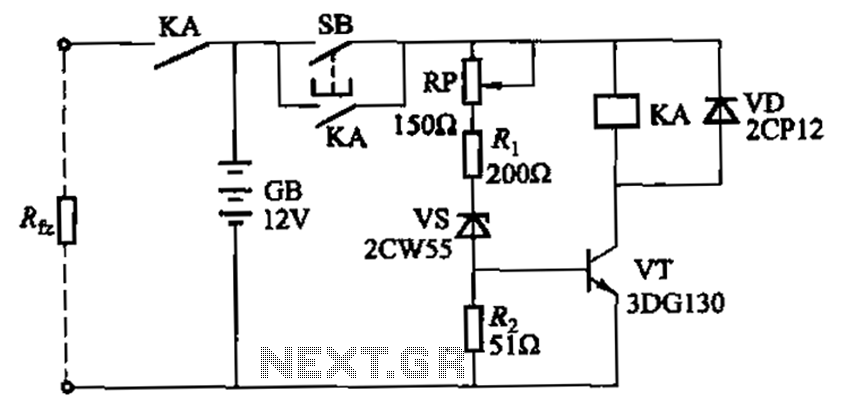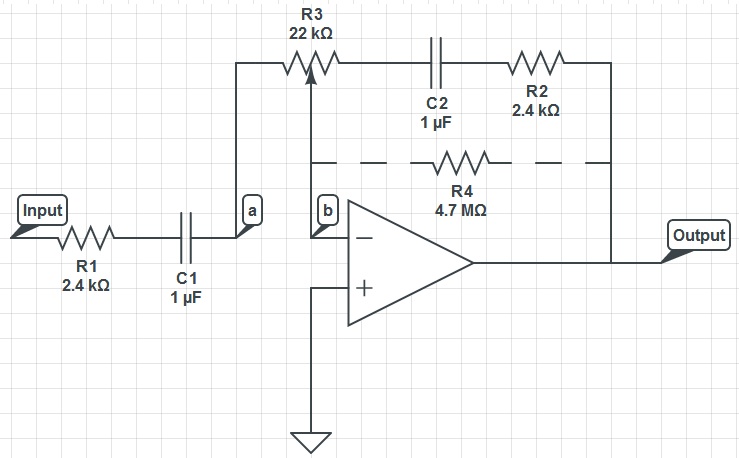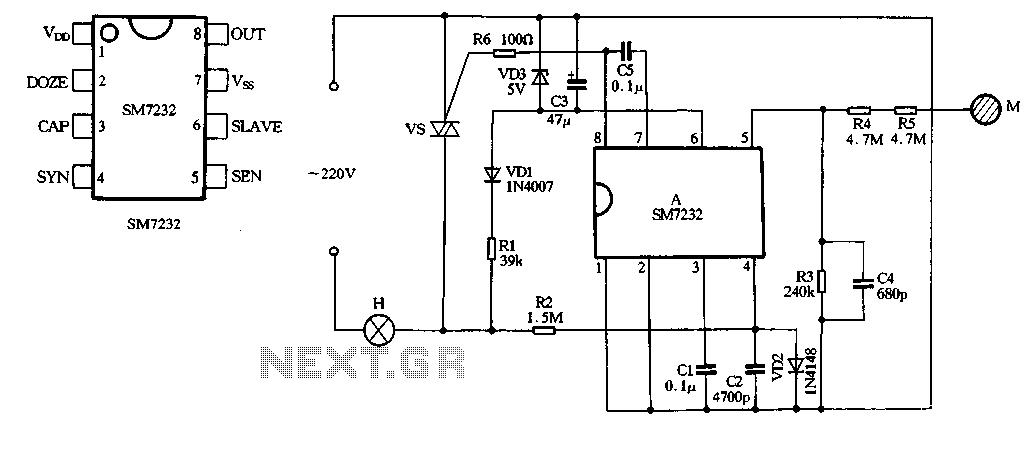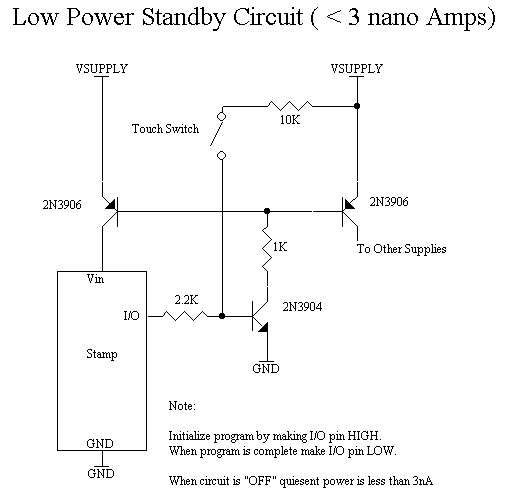
Automatic audio fader circuit
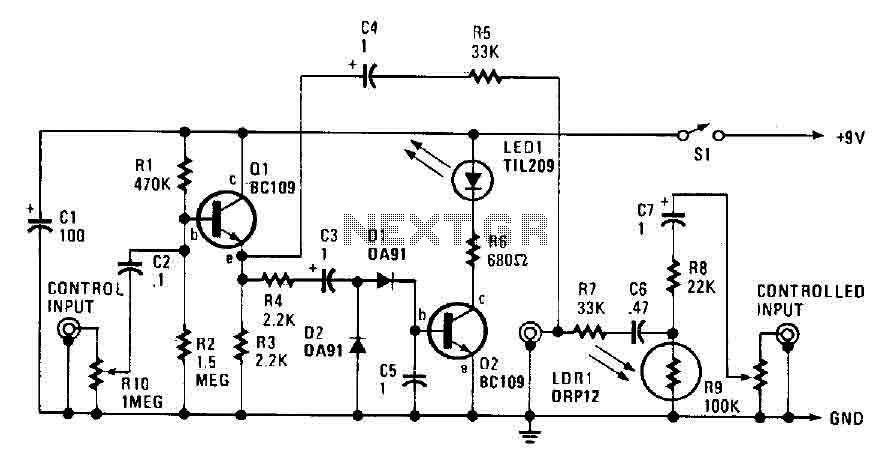
The automatic fader reduces the background music level when narration is in progress. The control input through RIO, a preset audio level control, is directed into an emitter-follower buffer stage (Q1). This buffer provides high input impedance and ensures that the source impedance is sufficiently low to drive the rectifier and smoothing circuit, which consists of diodes D1, D2, and capacitor C5. The smoothed output then drives a simple LED circuit. The LED (LD) and resistor R8 form an infrared input pad, through which the output is routed via capacitors C6 and C7 to the output jack. The output to the emitter of Q1 is coupled through capacitors C4 and resistor R5. Resistors R5 and R7 act as a passive mixer. With an input voltage of 200 mV or less, there is sufficient voltage across C5 to activate transistor Q2. If the input exceeds 200 mV, Q2 will turn on, energizing the LED. This action decreases the resistance of the light-dependent resistor (LDR), resulting in signal loss due to increased attenuation. At an input level of 350 mV RMS, the signal reduction exceeds 20 dB.
The automatic fader circuit is designed to dynamically adjust the audio levels by reducing the volume of background music when narration occurs, ensuring clarity and intelligibility of the spoken content. The control input, provided through RIO, allows for preset audio levels to be established, facilitating consistent performance in varying audio environments.
The emitter-follower buffer stage (Q1) is crucial for maintaining high input impedance, allowing the circuit to interface effectively with various audio sources without loading them down. This buffer stage also ensures that the rectifier and smoothing circuit, comprising diodes D1 and D2 along with capacitor C5, receive a low enough source impedance to function correctly. The rectified and smoothed output is then utilized to drive an LED (LD), which visually indicates the status of the circuit.
The infrared input pad, formed by the LED (LD) and resistor R8, plays a significant role in the circuit's operation by detecting the presence of an input signal. The output is then filtered through capacitors C6 and C7 before reaching the output jack, ensuring that only the desired audio signal is passed on.
The coupling of the output to the emitter of Q1 through capacitors C4 and R5 allows for effective signal mixing. Resistors R5 and R7 function as a passive mixer, enabling the combination of multiple audio signals. The circuit is designed to respond to input levels, activating transistor Q2 when the input voltage surpasses 200 mV. This activation energizes the LED, providing a visual cue that the background music is being attenuated. The use of a light-dependent resistor (LDR) further enhances the circuit's functionality; as the resistance of the LDR decreases, it contributes to increased attenuation of the background music, thereby improving the prominence of the narration.
At higher input levels, such as 350 mV RMS, the circuit is capable of achieving significant signal reduction, exceeding 20 dB. This level of attenuation ensures that the narration remains clear and distinct, effectively managing audio levels in real-time and enhancing the overall listening experience.The automatic fader drops at the background music while the narration is in place. The control input through RIO, a preset audio level control, into an emitter-follower buffer stage CQI). The buffer provides high input impedance and ensures that the source impedance is low enough to drive the rectifier and smoothing circuit, consisting of DI, D2, and C5.
The smoothed output drives a simple LED circuit. LD and R8 form an IR input pad through which the output is fed through C6 and C7 to the output jack. The output to the emitter of QI couples making this C4 and R5. R5 and R7 are a passive mixer. With 200 mV or less at the entrance, there is enough voltage on C5 to tum Q2. More than 200 mV, Q2 will turn on a boundary, and the LED is energized. This brings down the resistance of the LDR, and signal loss due to increased attenuation. Increase the input of 350 mV rms, and you get a signal reduction greater than 20 dB. 🔗 External reference
The automatic fader circuit is designed to dynamically adjust the audio levels by reducing the volume of background music when narration occurs, ensuring clarity and intelligibility of the spoken content. The control input, provided through RIO, allows for preset audio levels to be established, facilitating consistent performance in varying audio environments.
The emitter-follower buffer stage (Q1) is crucial for maintaining high input impedance, allowing the circuit to interface effectively with various audio sources without loading them down. This buffer stage also ensures that the rectifier and smoothing circuit, comprising diodes D1 and D2 along with capacitor C5, receive a low enough source impedance to function correctly. The rectified and smoothed output is then utilized to drive an LED (LD), which visually indicates the status of the circuit.
The infrared input pad, formed by the LED (LD) and resistor R8, plays a significant role in the circuit's operation by detecting the presence of an input signal. The output is then filtered through capacitors C6 and C7 before reaching the output jack, ensuring that only the desired audio signal is passed on.
The coupling of the output to the emitter of Q1 through capacitors C4 and R5 allows for effective signal mixing. Resistors R5 and R7 function as a passive mixer, enabling the combination of multiple audio signals. The circuit is designed to respond to input levels, activating transistor Q2 when the input voltage surpasses 200 mV. This activation energizes the LED, providing a visual cue that the background music is being attenuated. The use of a light-dependent resistor (LDR) further enhances the circuit's functionality; as the resistance of the LDR decreases, it contributes to increased attenuation of the background music, thereby improving the prominence of the narration.
At higher input levels, such as 350 mV RMS, the circuit is capable of achieving significant signal reduction, exceeding 20 dB. This level of attenuation ensures that the narration remains clear and distinct, effectively managing audio levels in real-time and enhancing the overall listening experience.The automatic fader drops at the background music while the narration is in place. The control input through RIO, a preset audio level control, into an emitter-follower buffer stage CQI). The buffer provides high input impedance and ensures that the source impedance is low enough to drive the rectifier and smoothing circuit, consisting of DI, D2, and C5.
The smoothed output drives a simple LED circuit. LD and R8 form an IR input pad through which the output is fed through C6 and C7 to the output jack. The output to the emitter of QI couples making this C4 and R5. R5 and R7 are a passive mixer. With 200 mV or less at the entrance, there is enough voltage on C5 to tum Q2. More than 200 mV, Q2 will turn on a boundary, and the LED is energized. This brings down the resistance of the LDR, and signal loss due to increased attenuation. Increase the input of 350 mV rms, and you get a signal reduction greater than 20 dB. 🔗 External reference
